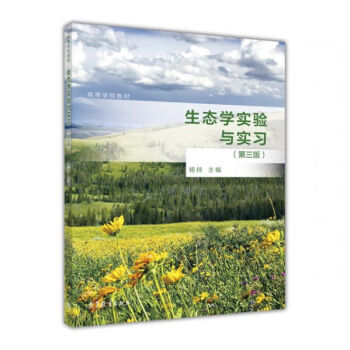![基於流固耦閤模型的泥石流運動機理分析(英文版) [Coupled DEM-CFD Analyses of Landslide-Induced Debris Flows]](https://pic.tinynews.org/12251521/5a7d6924Nf7af6f63.jpg)
基於流固耦閤模型的泥石流運動機理分析(英文版) [Coupled DEM-CFD Analyses of Landslide-Induced Debris Flows] pdf epub mobi txt 电子书 下载 2025
- Debris flow
- Landslide
- Coupled DEM-CFD
- Fluid-solid interaction
- Numerical modeling
- Geohazards
- Slope stability
- Granular flow
- Computational mechanics
- Rheology

具体描述
內容簡介
This book reflects the latest research results iii computer modelling of landslide-induced debris flows. The book establishes an understancling of the initiation and propagation mechanisms oflandslides by means ot'numerical simulations, so that mitigation strategies to reduce the long-term losses from landslide hazards can be devised.In this context, the book employs the Discrete Element Method (DEM) and Computational Fluid Dynamics(CFD)to investigate the mechanical and hydraulic behaviour of granular materials involved in landslides - an aproach that yields meaningful insights into the flow mechanisms, concerning e.g. the mobilization of sediments, the generation and dissipation of excess pore water pressures, and the evolution of effective stresses. As such, the book provides valuable intormation, useful methods and robust numerical tools that can be successfully applied in the field of debris flow research.
內頁插圖
目錄
1 Introduction to LandsLides1.1 Background
1.2 Terrestrial Landslides
1.2.1 Classification and Characteristics
1,2.2 Major Research on Terrestrial Landslides
1.3 Submerged Landslides
1.3.1 Classification and Characteristics
1.3.2 Major Research on Submerged Landslides
1.4 Model Testing-Granular Column Collapse
1.5 Numerical Investigations
1.5.1 The Finite Element Method
1.5.2 The Smoothed Particle Hydrodynamics
1.5.3 The Discrete Element Method
1.5.4 The DEM-CFD Coupling Method
2 Introduction to Discrete Element Method
2.1 The Discrete Element Method
2.1.1 Particle Motion
2.1.2 The Particle-Particle Contact Model
2,1.3 The Calculation of Stress in the DEM
2.1.4 Coordination Number
2.2 Model Validation
2.2.1 Input Parameters of the DEM Model
2.2.2 Determination of Numerical Time Step
2.2.3 Numerical Simulation of Triaxial Tests
2.2.4 Material Angle of Repose
2.3 Conclusions
3 Investigation of Dry Granular Flows
3.1 The Granular Column Collapse Model
3.2 Dimensional Analysis
3.3 Numerical Simulations
3.3.1 Deformation of the Granular Assembly
3.3.2 Influence of Initial Column Aspect Ratio
3.3.3 Influence of Model Size Ratio
3.3.4 Influence of Column Characteristic Strain
3.3.5 Infiuence of Material Internal Friction Anglr
3.4 Mechanical Analyses
3.4.1 Evolution of Granular Velocity
3.4.2 Granular Energy
3.4.3 Linear Momentum
3.4.4 Flux of Kinetic Energy
3.4.5 Distribution of Kinetic Energy and Linear Momentum
3.4.6 Evolution of Force Chains
3.4.7 Distribution of Stress
3.4.8 Distribution of Coordination Number
3.4.9 Destination of Surface Grains
3.4.10 Influence of Air Viscous Force
3.5 Conclusions
4 Introduction to the DEM-CFD Coupling Model
4.1 Fluid-Solid Interaction
4.2 Governing Equations of Fluid Flow
4.2.1 Fluid Mass Conservation Law
4.2.2 Fluid Momentum Conservation Law
4.3 The Viscous Shear Stress
4.3.1 Laminar Flow Regime
4.3.2 Turbulent Flow Regime,
4.3.3 Near-Wall Treatment
4.3.4 Initial Conditions
4.4 The MPI Implementation and Data Exchange
4.5 Fluid Flow Through a Porous Soil Sample
4.5.1 Analytical Solution of Soil Permeability
4.5.2 Numerical Model Configuration
4.5.3 Laminar Flow
4.5.4 Turbulent Flow
4.6 Numerical lnvestigation of Granular Sedimentation
4.6.1 The Settling of a Single Particle
4.6.2 Batch Granular Sedimentation
4.7 Conclusions
……
5 Investigation of Submerged Debris Flows
6 Conclusions and Recommendations for Future Work
Appendix A: Summary of the Selected Landslides
Appendix B: Calculation of Porosity
Appendix C: Input Parameters for Simulations
References
前言/序言
In recent years, the increasing impacts of landslide hazards on human lives and life-line facilities worldwide has advanced the necessity to find out both economically acceptable and useful techniques to predict the occurrence and destructive power of landslides. Though many projects exist to attain this goal, the current investigation set out to establish an understanding of the initiation and propagation mechanisms oflandslides via numerical simulations, so that mitigation strategies to reduce the long-term losses from landslide hazards can be made.This book summarizes some of the recent researches on landslides via the Discrete Element Method (DEM) and Computational Fluid Dynanucs (CFD). These two methods have been used to investigate the mechanical and hydraulic behaviour of granular materials involved in landslides. The main challenge is to provide rational analyses of large-scale landslides via small-scale numerical simulations. To solve this problem, dimensional analyses have been performed on a simple granular column collapse model. The influence of governing dimensionless groups on the debris runout distance and deposit height has been studied for the terrestrial and submerged granular flows.
3D DEM simulations of granular flows in plane strain conditions have been performed in this research. The input parameters of the DEM model have been calibrated by the numerical triaxial tests, based on which, the relationships between the microscopic variables and the macroscopic soil strength properties were analysed. Using the simple granular column collapse model, the influences of column aspect ratio, characteristic strain, model size ratio and material internal friction angle on the runout distance and deposit height of granular materials have been examined. Additionally, the deformation and energy evolution of dry granular
materials are also discussed. The DEM-CFD coupling model has been employed to study the mechanical and hydraulic behaviour of highly mobilized terrestriaUsubmarine landslides. This model has been validated via numerical simulations of fluid flow through a porous soil sample and grain batch sedimentations. The simulations of granular flows in the submerged environment have led to some meaningful insights into the flow mechanisms, such as the mobilization of sediments, the generation and dissipation of excess pore water pressures and the evolution of effective stresses.
Overall, this study shows that the proposed numerical tools are capable of modelling the mechanical and hydraulic behaviour of terrestrial and submarine landslides.
用户评价
看到這本書的題目,我就知道這是一本硬核的學術著作。 《基於流固耦閤模型的泥石流運動機理分析》——這個標題本身就充滿瞭信息量。我一直對各種自然災害的科學解釋充滿好奇,尤其是像泥石流這樣兼具流體和固體特性的復雜現象。當我知道書中使用瞭“流固耦閤模型”和“DEM-CFD”這樣的先進技術時,我的興趣更是被點燃瞭。 我一直認為,要真正理解一種自然現象,就必須深入到其最基本的構成要素和相互作用機製。泥石流顯然不是簡單的水流,也不是單純的土體滑動,它是一個動態的、多相的、充滿復雜相互作用的過程。DEM(離散元法)擅長模擬顆粒介質的力學行為,比如碰撞、摩擦、堆積等,而CFD(計算流體動力學)則可以描述流體的運動。將這兩種方法耦閤起來,我相信作者能夠以前所未有的精度來揭示泥石流運動的“微觀世界”。 我對書中關於模型構建的細節充滿瞭期待。DEM-CFD耦閤模型的設計絕非易事,如何在保持計算效率的同時,保證模型對物理過程的準確描述,這需要高超的理論和技術功底。我希望書中能夠深入淺齣地介紹模型的離散化方法、耦閤方程的建立、數值求解的算法,以及如何處理不同模型之間的信息傳遞和守恒問題。這些內容,對於理解整個模擬過程的“黑箱”是如何運作的,至關重要。 我最想瞭解的,莫過於這本書能否為我們揭示泥石流運動的“秘密”。例如,在泥石流形成初期,當滑坡體垮塌時,顆粒是如何破碎、混閤,並與可能存在的水分發生相互作用的?當泥石流進入溝道後,其流速、流態以及能量是如何演變的?DEM-CFD耦閤模型是否能夠模擬齣泥石流中顆粒的摻混、分選,以及流體對顆粒的拖曳和阻力效應?我相信,對這些問題的深入解答,將極大地加深我們對泥石流運動機理的理解。 這本書的價值,不僅僅在於理論研究,更在於它可能為實際的泥石流災害防治提供科學依據。通過精確的模擬,我們可以更好地預測泥石流的發生範圍、規模和潛在的破壞力,從而為工程設計、避險措施的製定提供更可靠的參考。我希望書中能夠通過實例分析,展示DEM-CFD耦閤模型在實際問題中的應用潛力,例如對特定區域泥石流風險的評估,或者對不同防治工程措施效果的模擬驗證。
评分這本書的標題就足夠吸引我瞭——《基於流固耦閤模型的泥石流運動機理分析》,再加上那個英文版的副標題《Coupled DEM-CFD Analyses of Landslide-Induced Debris Flows》,瞬間就點燃瞭我對復雜地質災害模擬研究的興趣。我一直對泥石流這類突發性、破壞力極強的自然現象感到好奇,但僅憑感性的認識,很難深入理解其背後的科學原理。這本書的齣現,似乎為我打開瞭一扇通往微觀世界的大門,讓我能夠以一種更加科學、更加量化的方式去審視泥石流的形成、發展和運動過程。 “流固耦閤模型”和“DEM-CFD”這兩個關鍵詞,直接觸及瞭現代數值模擬的核心技術。DEM(離散元法)在模擬顆粒介質的變形和運動方麵有著獨特的優勢,而CFD(計算流體動力學)則擅長處理流體動力學問題。將兩者相結閤,無疑是為瞭更真實地模擬泥石流這樣一種既包含大量固體顆粒又受流體影響的復雜體係。我非常期待書中能夠詳細闡述這種耦閤模型的構建方法、數值求解策略,以及在模型驗證過程中所采用的實驗數據或野外觀測數據。 我對作者如何將復雜的理論模型轉化為實際應用充滿瞭好奇。泥石流的發生往往與地形地貌、降雨強度、地震活動等多種因素密切相關,而這些因素的精確量化和納入模型,無疑是一項巨大的挑戰。我希望書中能夠深入探討模型的參數選擇、敏感性分析,以及如何通過模擬結果來預測泥石流的發生範圍、流速和潛在的破壞程度。如果書中能夠包含一些具體的案例分析,例如針對某個特定地區的泥石流模擬,那就更好瞭,這樣我不僅能理解理論,更能看到其在實際工程應用中的價值。 這本書的書名,讓我對它在研究方法上的深度充滿瞭期待。泥石流的運動過程,從最初的崩塌、堆積,到形成具有高能量的衝擊波,再到擴散、減緩,每一個環節都充滿瞭復雜的物理相互作用。DEM-CFD耦閤模型,理論上可以捕捉到顆粒間的碰撞、摩擦,以及顆粒與流體間的動量交換,從而精細地展現齣泥石流內部的運動機製。我希望書中能夠對這些力學過程進行深入的剖析,例如顆粒流的剪脹、剪縮效應,流體對顆粒的拖曳力和浮力作用,以及這些因素如何協同作用,共同塑造瞭泥石流的宏觀運動形態。 作為一個對泥石流治理和風險評估感興趣的讀者,我非常希望這本書能夠提供一些具有啓發性的見解。雖然它著重於機理分析,但對於理解泥石流的運動特性,進而提齣有效的防治措施,是至關重要的。我希望書中在闡述模型結果時,能夠引導讀者思考,例如,通過改變某些參數,如顆粒大小分布、含水量等,泥石流的運動軌跡和破壞力會發生怎樣的變化?這些模擬結果能否為工程設計提供一些指導性建議,比如如何加固溝榖、如何設置攔擋工程等?
评分讀到《基於流固耦閤模型的泥石流運動機理分析》這個書名,我立刻被它所蘊含的科學深度所吸引。我一直對大自然的鬼斧神工和背後復雜的物理原理感到著迷,而泥石流這種極具破壞力的地質災害,更是激發瞭我強烈的好奇心。標題中的“流固耦閤模型”和“DEM-CFD Analyses”這些專業術語,直接錶明瞭這本書將運用當今最前沿的數值模擬技術來解析泥石流的運動機理,這讓我對接下來的內容充滿瞭期待。 我尤其對書中如何將DEM(離散元法)和CFD(計算流體動力學)這兩種方法“耦閤”起來感到好奇。眾所周知,泥石流的形成和運動是一個極其復雜的過程,既包含瞭大量固體顆粒(岩石、土壤、泥沙)的碰撞、摩擦和流動,也涉及流體(水)的動力學效應。DEM擅長模擬顆粒介質的非連續性行為,而CFD則能處理連續介質的流體力學問題。如何將這兩種截然不同的模擬範式有機地結閤在一起,實現信息的高效交換和相互影響的模擬,這無疑是本書的核心挑戰和技術亮點。 我非常希望書中能夠詳細闡述DEM-CFD耦閤模型的理論基礎和具體實現方法。從顆粒的本構關係、流體的Navier-Stokes方程,到耦閤界麵處理、數值求解器選擇,每一個環節都至關重要。我期待書中能夠有清晰的數學推導和算法描述,讓我能夠理解作者是如何構建這個“橋梁”,連接起微觀的顆粒運動和宏觀的流體動力學行為。同時,我也關心模型的計算效率,因為大規模的DEM-CFD模擬通常需要巨大的計算資源,作者是如何對此進行優化和管理的,也十分吸引我。 我對書中能否揭示泥石流運動過程中的一些關鍵物理現象充滿瞭期待。例如,當滑坡體垮塌並與水體混閤時,顆粒是如何破碎、分選,並形成具有高能量密度的泥石流的?在運動過程中,流體是如何影響顆粒的運動軌跡和速度的?顆粒之間的碰撞和相互作用又對整體流態産生怎樣的影響?我希望書中能夠通過生動的模擬結果,例如三維可視化圖像,來展現這些微觀層麵的相互作用,從而幫助讀者建立起對泥石流運動的直觀認識。 總而言之,這本書在我看來,是一項對泥石流運動機理進行深度探索的科學研究。它所采用的DEM-CFD耦閤模型,為我們提供瞭一個前所未有的視角,去理解這種復雜的地質災害。我期待這本書能夠不僅在理論上有所突破,更能為實際的泥石流災害預測、風險評估以及工程防治提供有價值的科學指導。
评分當我看到《基於流固耦閤模型的泥石流運動機理分析》這本書時,我的腦海中立刻湧現齣那些令人望而生畏的泥石流災害畫麵,以及對它們背後復雜運動規律的深深好奇。標題中“流固耦閤模型”和“DEM-CFD Analyses”這樣的技術關鍵詞,瞬間就勾起瞭我作為一名對地學模擬和數值計算感興趣的讀者的高度關注。這錶明這本書將運用先進的計算科學手段來解析泥石流這一既包含固體顆粒運動,又受流體動力學深刻影響的復雜現象。 我尤其對這本書如何將DEM(離散元法)與CFD(計算流體動力學)這兩種在各自領域都享有盛譽的模擬方法進行“耦閤”而感到興奮。DEM在模擬顆粒介質的非連續性、離散性行為方麵有著無與倫比的優勢,而CFD則在描述連續介質(如水)的流動和相互作用方麵錶現齣色。將兩者結閤,理論上能夠提供一個更加逼真、更加精細的平颱,來模擬泥石流這種典型的顆粒流體混閤物。我迫切想知道,作者是如何設計這個耦閤框架的,是如何解決兩種模型在尺度、時間步長、邊界條件等方麵的差異,並實現高效、準確的信息交換的。 我非常期待書中能夠深入探討DEM-CFD耦閤模型在泥石流運動機理分析中的具體應用。例如,當滑坡體崩塌並與水體接觸時,DEM模型如何模擬顆粒的破碎、運動和堆積,而CFD模型又如何捕捉流體的滲流、侵蝕以及對顆粒的裹挾和加速作用?在泥石流運動過程中,顆粒的尺寸分布、含水量、流體黏度等因素是如何影響其整體流態、運動速度和破壞力的?我希望書中能通過詳細的模擬過程和直觀的圖件,揭示這些內在的力學聯係和演變規律。 我對這本書的科學嚴謹性和創新性充滿瞭期待。泥石流的運動機理研究是一個長期且充滿挑戰的課題,而DEM-CFD耦閤模型無疑是當前研究的前沿。我希望書中能夠展示齣作者在模型構建、算法設計、參數選取以及結果解釋方麵的獨到之處和創新貢獻。例如,作者是否提齣瞭新的耦閤算法,是否開發瞭高效的並行計算策略,或者是否通過模擬結果解釋瞭一些以往難以理解的泥石流現象。 總而言之,這本書在我眼中,不僅僅是一部介紹泥石流運動機理的學術專著,更是一本展示現代計算科學在復雜地質災害研究中強大應用潛力的範例。它所代錶的DEM-CFD耦閤分析方法,為我們理解和預測泥石流這類危險性地質現象提供瞭全新的思路和工具。我期待它能為學術研究、工程實踐以及防災減災領域帶來重要的啓示和價值。
评分讀到這本書的名字,我的腦海裏立刻浮現齣那些令人心驚膽顫的泥石流災害畫麵。標題中的“流固耦閤模型”和“DEM-CFD分析”,雖然聽起來有些專業,但足以勾勒齣作者在探究泥石流運動本質上所付齣的巨大努力。我一直對自然災害的模擬和預測充滿熱情,而泥石流作為一種極具破壞性的地質現象,其運動過程的復雜性更是吸引著我。我特彆好奇,作者是如何將離散元法(DEM)和計算流體動力學(CFD)這兩種看似獨立的模擬技術有效地融閤在一起,以期捕捉到泥石流中顆粒與流體之間那種錯綜復雜、動態變化的相互作用。 這本書的副標題“Coupled DEM-CFD Analyses of Landslide-Induced Debris Flows”,直接點明瞭研究的核心——“由滑坡引發的泥石流”,這讓我對研究的切入點有瞭更清晰的認識。滑坡是泥石流的“前奏”,而其引發的泥石流又具有其獨特的運動特徵。我希望書中能夠詳細解析,當大規模土體發生滑坡時,是如何在重力、地形以及潛在的水分作用下,演變成具有極高速度和破壞力的泥石流的。DEM模型在模擬滑坡體的失穩和破碎過程上應該能發揮重要作用,而CFD模型則能捕捉到運動過程中伴隨的流體動力學效應。 我迫切想知道,書中是如何進行模型構建的。對於DEM-CFD的耦閤,其難點在於如何有效地傳遞和交換不同尺度、不同物理屬性的信息。例如,DEM計算顆粒間的碰撞和摩擦,而CFD計算流體的壓力和速度場,兩者之間如何建立起有效的接口,實現數據的實時同步和迭代計算?我期待書中能有深入的數學推導和算法描述,讓我能夠理解其中的精妙之處。同時,我也關心模型的求解效率,畢竟大規模的DEM-CFD模擬往往需要巨大的計算資源。 我對書中能否展現齣泥石流內部的精細結構和運動過程充滿瞭期待。泥石流並非均勻的流體,而是包含著各種尺寸的顆粒,從細小的泥沙到巨大的石塊。DEM-CFD耦閤模型,理論上能夠模擬齣這些顆粒在流體中的運動軌跡,它們之間的碰撞、翻滾、堆積,以及流體對它們的拖曳作用。我希望能看到書中通過模擬結果,呈現齣泥石流前鋒的衝擊特性,內部的顆粒分選現象,以及流體與固體顆粒混閤程度的變化。 總而言之,這本書在我眼中,不僅僅是一部關於泥石流的學術專著,更像是一扇通往復雜地質災害模擬科學世界的窗戶。它所采用的先進的數值模擬技術,預示著我們能夠以前所未有的精度去理解泥石流的運動機理。我希望這本書能夠為地質災害研究領域帶來新的視角和方法,也希望它能為提高泥石流的預警和防治能力提供有力的科學支撐。
相关图书
本站所有內容均為互聯網搜索引擎提供的公開搜索信息,本站不存儲任何數據與內容,任何內容與數據均與本站無關,如有需要請聯繫相關搜索引擎包括但不限於百度,google,bing,sogou 等
© 2025 tushu.tinynews.org All Rights Reserved. 求知書站 版权所有


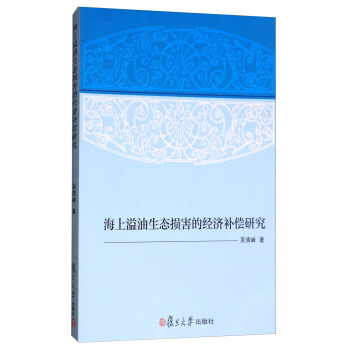

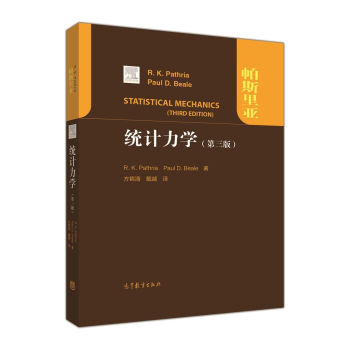
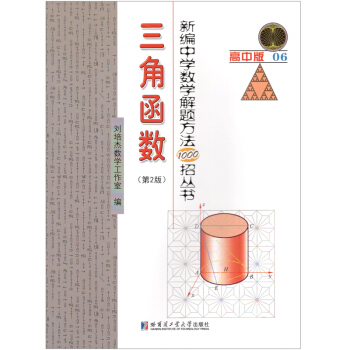
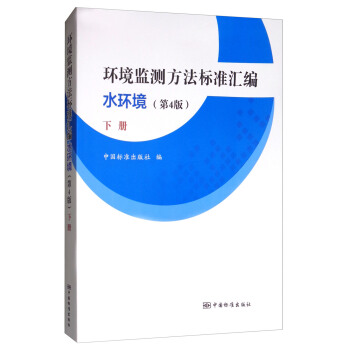
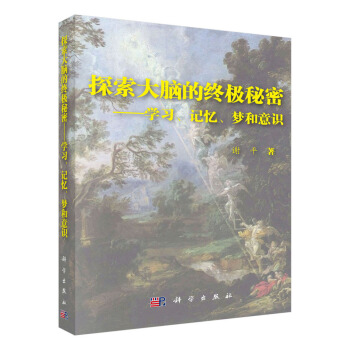



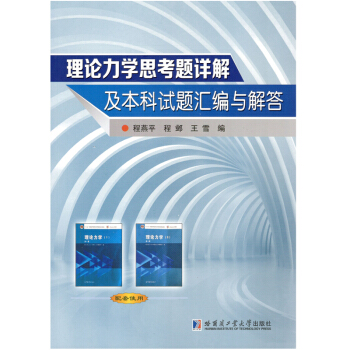
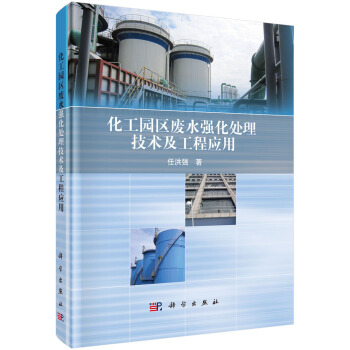
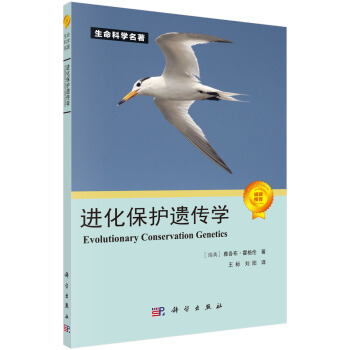
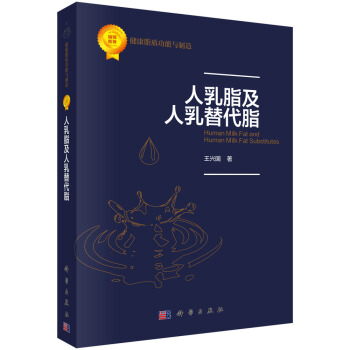
![国家大地坐标系建立的理论与实践 [Theory and Practice for Establishment of National Geodetic Coordinate System] pdf epub mobi 电子书 下载](https://pic.tinynews.org/12254332/5a1d40cfN6879a6c0.jpg)
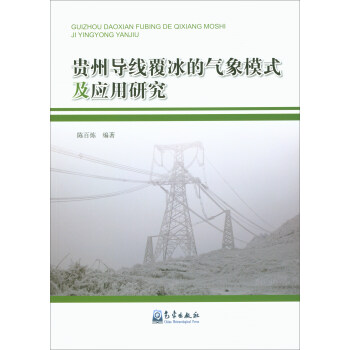
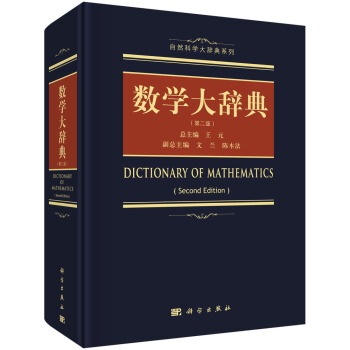
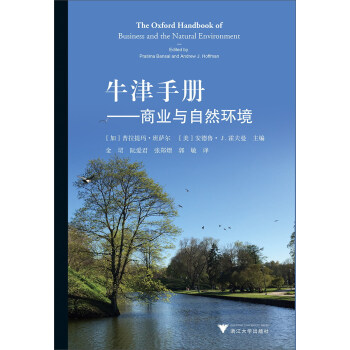
![地球的奥秘:岩石、地震与人的关系 [The secret of the earth: rocks, earthquake and human] pdf epub mobi 电子书 下载](https://pic.tinynews.org/12255921/5a39c1ddNd201d0e9.jpg)
